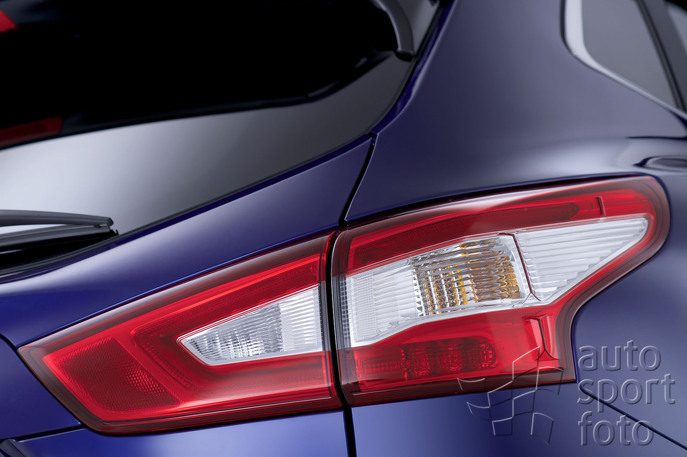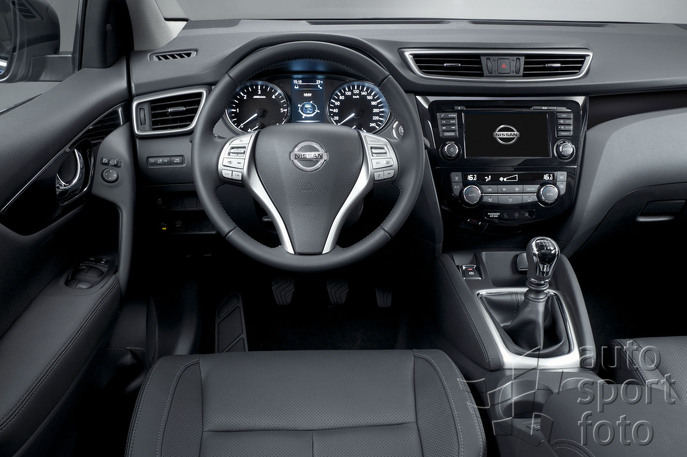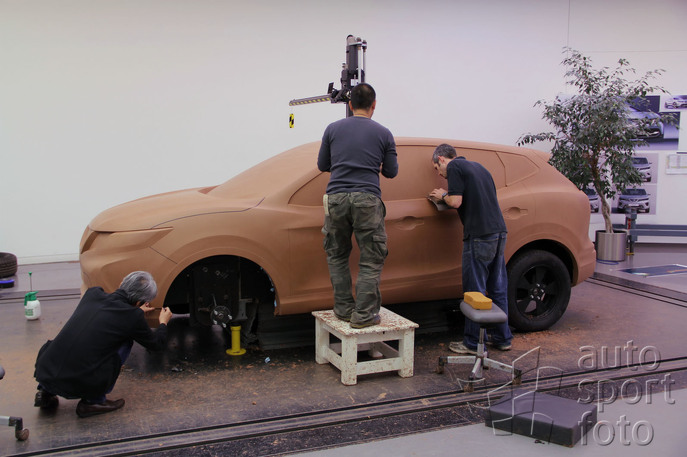New Nissan Qashqai: Designing the next crossover icon

ROLLE, Switzerland (21st January, 2014): How do you redesign a car that created one of the most successful and popular segments in recent motoring history? With bold design and accessible technology at its heart, the new Qashqai is the end product of a remarkable development story - a journey that marks the start of the next generation of crossovers.

Replacing and improving on a design loved and admired by nearly two million owners is no easy task. Led by Nissan's chief creative officer Shiro Nakamura, the UK-based Nissan Design Europe team quickly established three core values for the new Qashqai.
"The inspiration was three-fold," explains Shiro Nakamura. "Athletic Agility, Smart Premium and In Control are themes that run through every element of the design. This car represents several years of dedicated work. We have created an all-new design that builds on the success of the first generation Qashqai and confirms Nissan's crossover leadership."

Athletic agility
Drawing on Nissan's crossover family DNA, new Qashqai features a bold, sporty stance that is instantly recognisable yet new and exciting.
One of the key elements of the Qashqai's design form is the relationship between the wheels and the rest of the body. "We opted to change the wheel arch volumes to accentuate the car's strength and confidence," explains Darryl Scriven, Design Excellence Manager, Nissan Design Europe. "By creating longer window lines we were able to add a little more mass around the wheels. We wanted to use the middle of the body as a connector to link the four corners and a shape that would be more athletic. A wheel-oriented design such as this shows more power and protection and suggests that the car has a proud, inner strength."
The relationship between the upper and lower sections of the bonnet was another area where Nissan's design team invested considerable time and expertise. "There's now a lot more movement in the lower part of the body with less of a contrast between the two sections," explains Darryl Scriven. "Take the rear bumper, for example. The first-generation car had a fairly simple overrider look while the new car has a more sophisticated diffuser-style design. We've given the protective parts a more premium feel."

Taisuke Nakamura, Design Director, Nissan Design Europe adds: "We've added more emotion to the car. There's more movement on the surfaces and a clearer definition of volumes.
"We wanted to make the new Qashqai more modern and I'm confident that we have achieved that goal. Look at the front quarter and you can see the contrast of dynamic volumes and very sharp graphics of the headlamps and radiator grille. The V motion grille leads into the bonnet sculpture to stretch the dynamic motion from the grille towards the A-pillar. This contrasts with the fluid body and dynamic shapes."
Even seemingly simple elements such as the roofline have undergone a complete redesign, as Darryl Scriven explains: "The new Qashqai has a ‘faster' roofline than the first-generation car. It drops towards the rear of the car and we've extended the line with a long overhang. This enhances the feeling of speed and agility and gives the new Qashqai a more dynamic look."

Smart Premium
Nissan's philosophy of accessible technology can be seen and touched everywhere in the new Qashqai. From the interior materials and controls to the exterior details, every area has been designed to make full use of available technologies.
By establishing the available technologies and features at the very start of the design process, the team at NDE were able to integrate all the key features into the car. As a result, all the Qashqai's technologies are perfectly integrated into the finished design and work effortlessly with the rest of the car.
"Technology doesn't have a specific form or shape," explains Taisuke Nakamura. "To express technology in the exterior design was a big challenge for us. Everyone has a different impression about technology, so how do you this through styling?"
The key to integrating technology was to work with it from the start. Darryl Scriven: "The LED headlamps are a great example of how we've integrated advanced technology into the new Qashqai. "We initially started out wanting to use the same bezel as the standard light. But we didn't think it showcased the technology as well as it could do, so we completely redesigned the bezel for the LED headlight. It's a beautiful element of the car with some incredibly complex geometric lines and shapes."

Nakamura's team also worked hard to develop the Qashqai's premium feel with a range of styling devices usually found on more expensive luxury models. But as with the Qashqai's technology features, the team was passionate about integrating them into the design at an early stage.
"Premium touches such as chrome trim around the windows were part of the design from the start. You can't just add these at the end and hope it looks premium," says Darryl Scriven. "Details are the key to the premium feel. Look at the panel gaps and areas where three panels with different materials meet. These processes take a very long time to perfect, but the difference to the finished car is massive."
One particular area where the design team invested considerable time is the clamshell bonnet - a highly complex pressing that presented Nissan's engineering and manufacturing teams with a number of challenges. "The panel gaps you get with a clamshell bonnet are three dimensional and were very hard to get it right," Darryl Scriven recalls. "We could have taken the easy option of having a flat bonnet with just two dimensional panel gaps, but that didn't give us the premium feel we were looking for. It was a huge task for the engineers, but the end result is incredible."

In Control
Control is a theme that runs throughout the new Qashqai's design. From the driver-focused interior and seating position to the exterior design, every element has been crafted to give passengers and owners a feeling of security and control.
"To create a feeling of security purely with design is difficult, so it was a real challenge for us at the start," explains Taisuke Nakamura. "We knew from early in the process that we wanted to increase the wheel size. Designing the car with larger wheels emphasises the feeling of driving capability, and that imparts a sense of security with the driver. We really pushed for this at the start." As a result, Tekna versions of the new Qashqai are fitted with 19-inch alloy wheels as standard.
To further enhance the confident personality of the new car, key details such as the front and rear lights came under intense design scrutiny, as Darryl Scriven explains: "We wanted the Qashqai to be instantly recognisable at a distance - whatever the lighting conditions. The rear combilamp and headlight follows the boomerang design theme - a core element of Nissan's new design language which gives sharp impression by adding clear direction for the illumination. With so many others competing in this area of the market, you need a powerful visual signature that works day and night."

Giving Qashqai passengers a feeling of control and security inside was another priority for the NDE design team, as Taisuke Nakamara explains: "The main instrument panel is a major element of the new design. Visually, it expands the width of the cockpit and flows into the door design. This creates a focus point at the centre for all the important displays and makes passengers feel protected by the car. To emphasise this feeling of protection, the lower section of the dashboard features padded panels, along with additional pads on the centre console for the knees."
Diskusia k článku
Najnovšie galérie
































 Carlos
Carlos 
 Lukáš
Lukáš 
 Gilles
Gilles 
 Walter
Walter 
 Xavier
Xavier